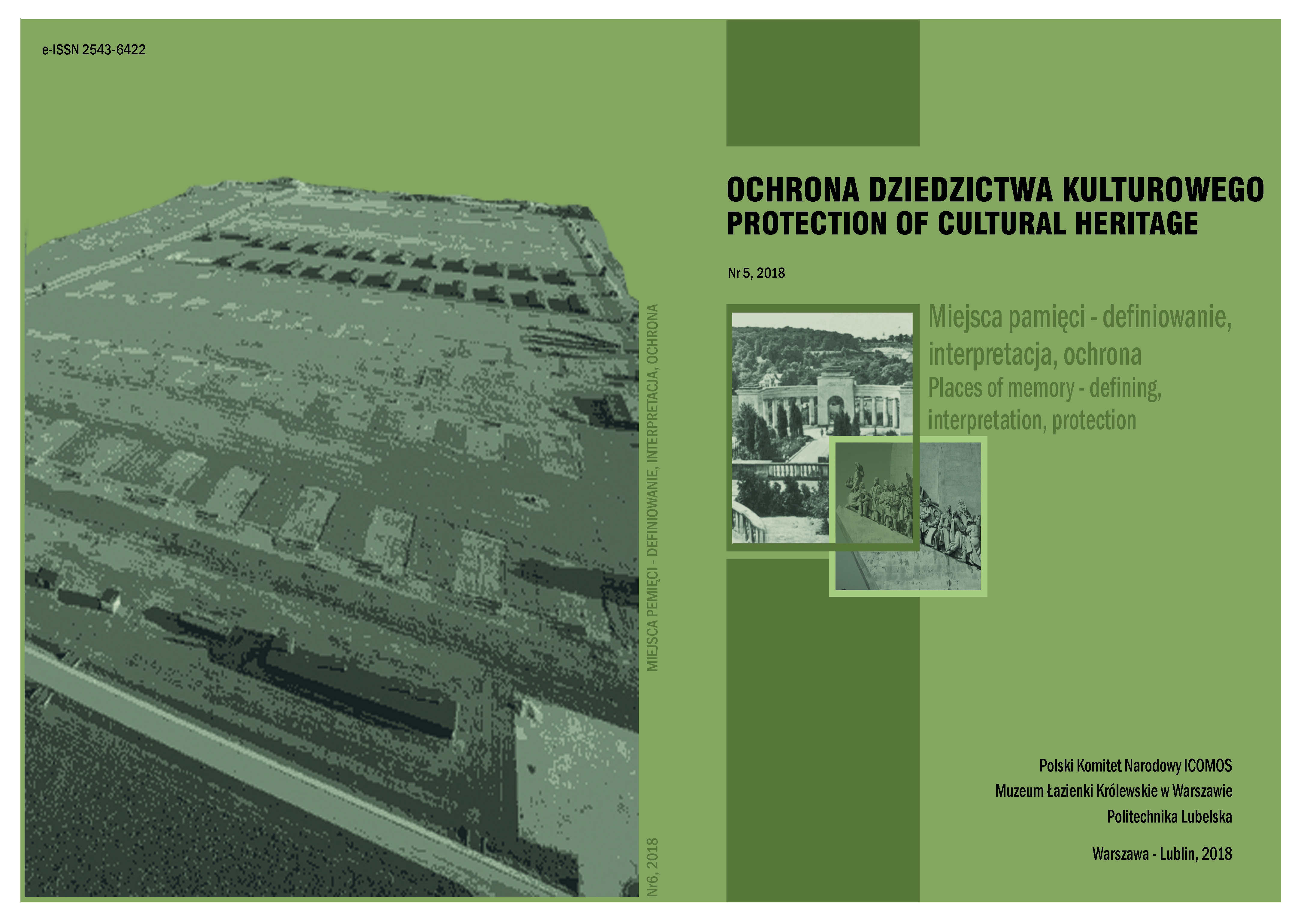The memory of a site. Role and Importance of Material Component in the Becoming of Sites of Memory
Article Sidebar
Open full text
Issue No. 5 (2018)
-
Place of memory in the resource of cultural heritage of technology
Waldemar J. Affelt11-31
-
Memory places or areas of Memory
Marek Barański33-46
-
Sites of Memory - memory of the site, defining and rules of protection in Lodz planning documents
Maria Dankowska47-61
-
The First World War Monuments in East Prussia as a place of memory or a memorial areas
Joanna Jakutowicz63-74
-
Protection of places of memory as a theoretical and practical issue
Wojciech Kowalski75-89
-
Places of memory as a subject of theoretical reflection in heritage conservation
Janusz Krawczyk91-101
-
Polish Memorial Places - changes in interpretation and problems of protection in the 21st century
Jakub Lewicki103-113
-
Places of Memory in the Spanish Law
Anna Ławicka115-123
-
Artifacts in memorial places - the issue of restitution of museum ehxibits
Anna Mazur125-134
-
Ours or foreign? Cemeteries of the Great War in Lesser Poland. Threats and perspectives
Agnieszka Partridge135-144
-
The memory of a site. Role and Importance of Material Component in the Becoming of Sites of Memory
Grzegorz Rytel145-153
-
Memorial sites of the Ukrainian minority in the Podkarpacie Region vs. commemoration of the military conflict on the Poland-Ukraine borderland after World War II
Grażyna Stojak155-166
-
Sites of Memory - defining the concept with regard to heritage protection
Bogusław Szmygin167-175
-
Post-truth of inscriptions - dilemma of wall painting conservation
Ewa Święcka177-185
-
Memorial Plaque of Polish Senators
Jarosław Maciej Zawadzki187-190
Main Article Content
DOI
Authors
Abstract
The author discusses the concept of a site of memory as understood by Pierre Nora while focusing on architectural structures which constitute material components of sites of memory. Some of them are architectonic ensembles or iconic buildings which are the major component of a site of memory. Other group includes structures which are deeply rooted in social memory and which, due to their material component destruction as a result of dramatic events in history, reinforced its position as sites of memory and were restored. There are also certain anomalous cases – a new structure developed where a destroyed one was once built, constitutes a material component of a new site of memory. In all the cases discussed, rigorous adherence to the principles of historic preservation, as in case of historic buildings, does not seem to be of primary importance.
Keywords:
References
Saryusz-Wolska M., Traba R. (red.), Modi memorandi. Leksykon kultury pamięci, Wydawnictwo Naukowe Scholar, Warszawa 2014.
Tomaszewski A., Polskie miejsca pamięci, [w:] Tomaszewski A., Ku nowej filozofii dziedzictwa, Międzynarodowe Centrum Kultury, Kraków 2012.
Rożek M., Wawel – święte miejsce Narodu, Dziennik Polski, 17.04.2010.
Article Details
Abstract views: 335
Grzegorz Rytel, Faculty of Architecture, Warsaw University of Technology
dr inż. architekt, adiunkt w Zakładzie Dziedzictwa Architektonicznego i Sztuki na Wydziale Architektury Politechniki Warszawskiej. Główne kierunki zainteresowań badawczych: historia i teoria architektury, architektura obiektów sepulkralno-kommemoratywnych w kontekście kulturowym, historia i ochrona architektury modernistycznej ze szczególnym uwzględnieniem architektury Brazylii i wkładu polskich architektów-emigrantów w jej rozwój.






